Extinction (2015)

Introducing Extinction (2015): A Character-Driven Zombie Tale in a Frozen Apocalypse
Extinction (2015), directed by Spanish filmmaker Miguel Ángel Vivas, is a post-apocalyptic horror-drama that reimagines the zombie genre through a deeply human lens. Adapted from Juan de Dios Garduño’s novel Y pese a todo, this Spain-U.S.-France-Hungary co-production shifts the focus from traditional zombie carnage to the emotional complexities of survival, family, and reconciliation. Starring Matthew Fox, Jeffrey Donovan, and Quinn McColgan, the film unfolds in the snowbound town of Harmony, where three survivors confront their pasts and evolved undead threats. Released on July 31, 2015, Extinction offers a slow-burning, character-driven narrative that, while not groundbreaking, stands out for its evocative visuals and compelling performances. This comprehensive article explores the plot, themes, cast, production, critical reception, and cultural significance of Extinction (2015), providing a complete introduction to this overlooked gem.
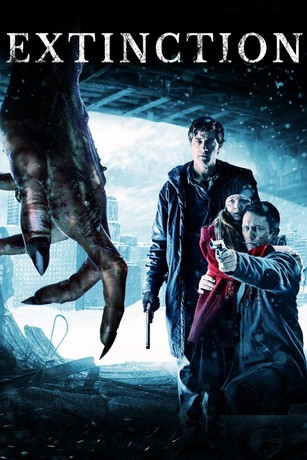
Plot Synopsis: Survival and Strife in a Frozen Wasteland
Extinction opens with a gripping prologue set during a viral outbreak that transforms most of humanity into rabid, zombie-like creatures. Two buses of survivors, guarded by soldiers, are ambushed, leaving only a handful alive. Among them are Patrick (Matthew Fox), Jack (Jeffrey Donovan), and a baby, later named Lu. The narrative then jumps nine years into the future, to the isolated, snow-covered town of Harmony, where Patrick, Jack, and young Lu (Quinn McColgan) have carved out a fragile existence, believing the infected have perished in the cold.
The story focuses on the strained relationship between Patrick and Jack, neighbors who live in fortified houses but refuse to speak due to a bitter feud rooted in their shared past, involving Lu’s mother, Emma (Valeria Vereau). Patrick, a bearded, reclusive survivalist, scavenges for food with his dog and broadcasts radio calls for other survivors, while Jack, more polished, raises Lu as his daughter, teaching her to read and shielding her from the outside world. The film’s first act unfolds like a chamber drama, exploring their isolation and emotional scars, with the zombies seemingly extinct.

This uneasy peace shatters when Patrick discovers a half-eaten fox, revealing that the infected have not only survived but evolved into blind, agile predators that hunt by sound, adapted to the icy environment. A series of tense encounters forces Patrick, Jack, and Lu to confront the new threat, testing their ability to overcome their animosity. The narrative weaves flashbacks to reveal the source of their conflict—a tragic decision during the initial outbreak—while building to a climactic zombie siege. A key twist reveals that bites no longer transmit the virus, adding a fresh layer to their survival strategy. The film culminates in a bittersweet resolution, where the trio’s reconciliation offers hope amidst their bleak reality.
Themes: Human Connection, Survival, and Forgiveness
Extinction distinguishes itself within the zombie genre by prioritizing human drama over relentless action. The theme of human connection drives the narrative, as Patrick, Jack, and Lu navigate their makeshift family dynamic. Their isolation in Harmony mirrors the emotional barriers between them, with Lu serving as the bridge that forces them to confront their grudges. The film suggests that survival in an apocalypse depends not just on physical endurance but on emotional bonds, a message that resonates with the genre’s roots in social commentary.

Survival is portrayed as both a physical and psychological struggle. The harsh, wintry setting amplifies the characters’ vulnerability, while the evolved zombies—blind but hypersensitive to sound—introduce a new survival challenge. Unlike traditional zombie films, where hordes dominate, Extinction uses the creatures sparingly, emphasizing the characters’ day-to-day resilience and resourcefulness.
Forgiveness is a central theme, as Patrick and Jack grapple with guilt and resentment over past choices. Their feud, rooted in a shared loss, unfolds through flashbacks, adding depth to their conflict. The film explores whether reconciliation is possible in a world stripped of hope, offering a nuanced take on redemption that avoids easy resolutions. These themes, combined with the focus on character development, make Extinction a meditative entry in the zombie canon.
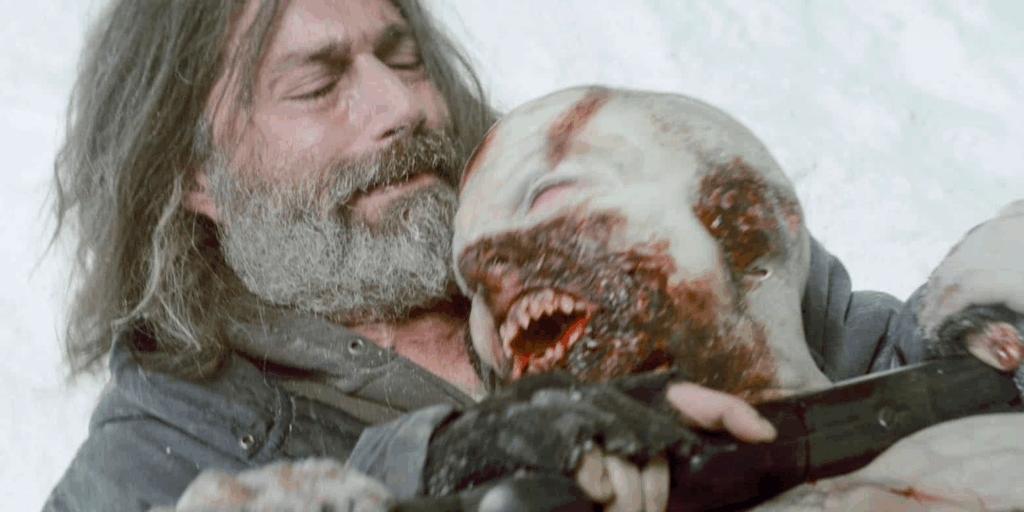
Cast and Performances: A Trio of Compelling Leads
The film’s intimate scope rests on the shoulders of its three main actors, who deliver compelling performances. Matthew Fox, known for Lost, plays Patrick with a raw intensity, portraying a man hardened by guilt and isolation. His disheveled appearance and quiet desperation contrast with his earlier TV roles, showcasing his range in a largely non-action part. Fox’s scenes with his dog add a layer of vulnerability, grounding Patrick’s survivalist persona.
Jeffrey Donovan, recognized from Burn Notice, brings a contrasting energy as Jack, a protective father figure who maintains a veneer of normalcy for Lu. Donovan’s nuanced performance captures Jack’s inner conflict, balancing warmth with suppressed anger toward Patrick. His chemistry with Quinn McColgan elevates their father-daughter dynamic, a highlight of the film.
Quinn McColgan, as Lu, is a revelation, holding her own against her seasoned co-stars. Her portrayal of a curious, resilient nine-year-old adds emotional weight, with critics like Katherine Pushkar of the New York Daily News calling her “someone to watch”. Supporting roles, including Valeria Vereau as Emma and Clara Lago in a brief cameo, are minimal but effective, keeping the focus on the central trio.
The actors’ ability to convey complex emotions in a slow-paced narrative ensures that the film’s drama resonates, even when the pacing falters. Their performances are a key reason Extinction feels more like a stage play than a typical zombie flick.
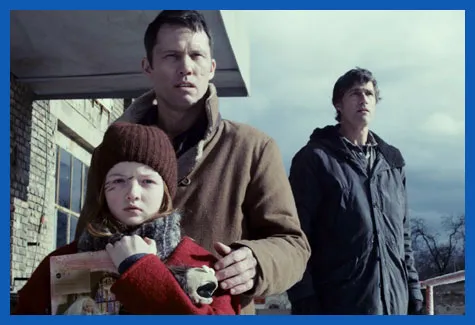
Production: A Visually Striking Low-Budget Effort
Directed by Miguel Ángel Vivas, whose previous film Kidnapped (2010) earned acclaim for its intensity, Extinction was produced by Vaca Films, La Ferme! Productions, Ombra Films, Telefónica Studios, and Laokoon Filmgroup, with Jaume Collet-Serra (The Shallows) as a producer. The screenplay, co-written by Vivas and Alberto Marini, adapts Garduño’s novel, shifting its focus to a more localized, character-driven story. Filming took place in Hungary and Spain, leveraging snowy landscapes to create Harmony’s desolate atmosphere.
The film’s budget, while not publicly disclosed, is estimated at $5–10 million, reflecting its modest production values. Cinematographer Josu Inchaustegui uses evocative, muted visuals to capture the wintry wasteland, with tight framing in interior scenes enhancing the sense of claustrophobia. Production designers Juan Pedro De Gaspar and Miguel Riesco craft detailed, lived-in sets, from Patrick’s cluttered home to Jack’s orderly sanctuary, reinforcing their contrasting personalities.
The zombies, designed with practical and CGI effects, are a highlight, with their bald, pale appearance and agile movements evoking primal fear. While the CGI occasionally feels dated, the creatures’ design is effective, particularly in night scenes. Sergio Moure’s score, with its haunting, minimalist tones, complements the film’s mood, though it’s understated compared to mainstream horror. Despite its low budget, Extinction punches above its weight visually, though some critics note the pacing and limited action reflect its financial constraints.

Critical Reception: Mixed but Appreciated by Some
Extinction received mixed reviews upon release, with critics divided over its slow pace and limited zombie action. On Rotten Tomatoes, it holds a 18% approval rating based on limited reviews, with critics noting that its “intriguing ideas” are “lost in the movie’s muddled plot and frustrating pacing”. The New York Daily News’ Katherine Pushkar criticized its “too little zombie and too much plot,” though she praised McColgan’s performance. The Hollywood Reporter’s Frank Scheck called it “overlong” and lacking visual flair, arguing it fails to elevate the genre.
However, some reviewers and audiences found much to admire. Fangoria praised Vivas for prioritizing “people at a premium,” comparing it to The Battery for its character focus. IMDb user reviews give it a 5.8/10, with fans highlighting its human drama and performances, one calling it “a work of art, not another recycled ‘run, shoot, run’ clone”. Others appreciated its fresh take on zombies, noting their blindness and non-infectious bites as novel twists. Common criticisms include a sluggish middle act and unoriginal elements, with some feeling the title Extinction misrepresents its localized scope.
The film’s niche appeal is evident in horror communities like Reddit’s r/horror, where users describe it as “a fun watch” despite its flaws. Its premiere at the 2015 Fantasia Festival earned positive buzz, though its limited theatrical release and VOD focus hindered mainstream success. Extinction remains divisive, appreciated by those who value character-driven horror but underwhelming for fans expecting traditional zombie thrills.

Cultural Significance: A Quiet Voice in the Zombie Renaissance
Released during the height of the zombie genre’s popularity, fueled by The Walking Dead and World War Z (2013), Extinction reflects a moment when filmmakers sought to innovate within an oversaturated market. Its focus on human drama over gore aligns with contemporaries like Maggie (2015), which also prioritized emotion. The film’s snowy setting and evolved zombies draw comparisons to The Colony (2013), but its intimate scale sets it apart from blockbuster apocalypse narratives.
Extinction engages with cultural anxieties about isolation and survival, themes that resonate more strongly post-2020. Its depiction of a fractured makeshift family mirrors real-world tensions, while the zombies’ adaptation to cold reflects fears of unstoppable environmental or biological threats. The film’s low-budget, multinational production highlights the global appeal of the zombie genre, with Spanish horror’s influence evident in Vivas’ restrained, atmospheric approach.
Despite its modest impact, Extinction has found a cult following among horror fans, particularly in Europe, where its fidelity to Garduño’s novel earned praise. Its availability on streaming platforms like Netflix and Amazon Prime has sustained its visibility, with viewers rediscovering it as a hidden gem. The film’s emphasis on character over spectacle offers a counterpoint to the genre’s mainstream trends, making it a noteworthy, if underappreciated, contribution.
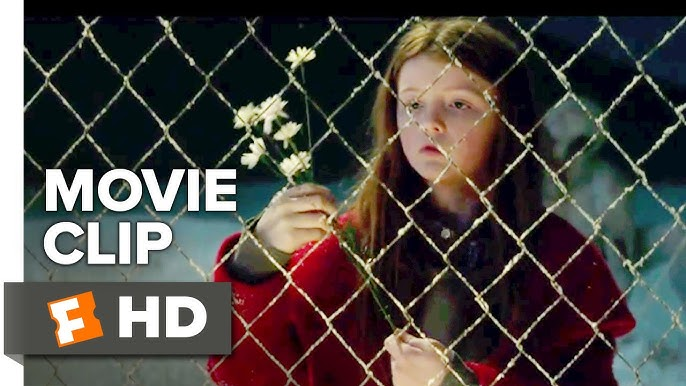
Comparison to Other Zombie Films
Extinction shares DNA with I Am Legend (2007) and The Walking Dead for its focus on survivor psychology, but its small cast and localized setting recall The Battery (2012). Unlike 28 Days Later (2002), which emphasized fast zombies, Extinction uses its blind, sound-sensitive creatures sparingly, prioritizing tension over action. Its snowbound aesthetic and evolved zombies echo The Colony, though it lacks that film’s larger scope.
The film’s drama-heavy approach contrasts with the high-octane World War Z, aligning more with Cargo (2017) for its emotional stakes. Critics note its unoriginal elements, like the bald zombie design, but praise its attempt to subvert genre tropes, such as non-infectious bites. Extinction’s blend of horror and family drama makes it a unique, if flawed, entry in the zombie renaissance.
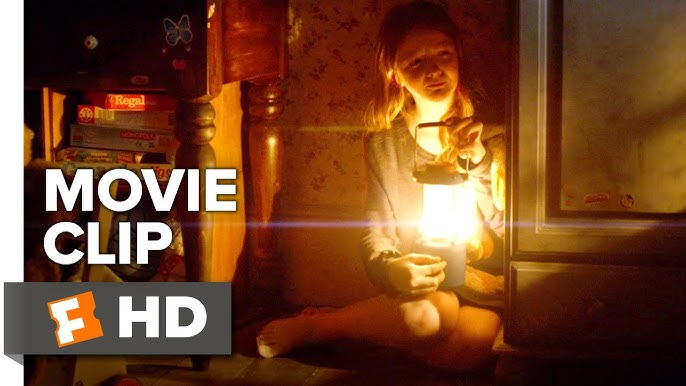
Why Watch Extinction (2015)?
Extinction (2015) is a must-watch for fans of character-driven horror and zombie films that prioritize drama over gore. Matthew Fox, Jeffrey Donovan, and Quinn McColgan deliver standout performances, bringing depth to a story of survival and reconciliation. The film’s haunting snowy visuals, novel zombie design, and emotional resonance make it a compelling alternative to mainstream apocalypse tales. While its slow pace may not suit action fans, its focus on human connection offers a rewarding experience for those willing to invest in its quiet intensity.
Recommended for ages 16 and up due to violence and mature themes, Extinction is perfect for viewers seeking a thoughtful, atmospheric horror film. Available on Netflix, Amazon Prime, and other platforms, it’s an accessible gem for horror enthusiasts and fans of Lost or Burn Notice. Dive into Harmony’s frozen wasteland and discover a zombie story that’s as much about the heart as it is about the undead.
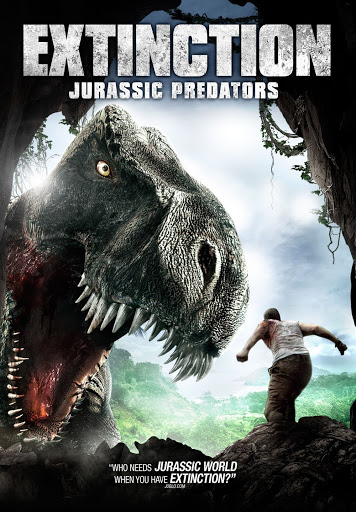
Conclusion: A Human Story in a Zombie World
Extinction (2015) is a bold, if imperfect, take on the zombie genre, trading relentless action for a slow-burning exploration of survival, guilt, and forgiveness. Directed by Miguel Ángel Vivas and elevated by strong performances from Matthew Fox, Jeffrey Donovan, and Quinn McColgan, the film transforms the snowy town of Harmony into a stage for human drama amidst an evolved undead threat. Its evocative visuals, character focus, and subtle innovations—like blind, non-infectious zombies—make it a standout, despite pacing issues and mixed reviews.
As a meditation on what it means to survive when hope is scarce, Extinction resonates with audiences seeking depth in their horror. Its cult status and streaming availability ensure its legacy as a hidden gem, inviting viewers to look beyond the genre’s tropes. In a world overrun by zombies, Extinction reminds us that the real battle is often within, making it a poignant and underrated addition to post-apocalyptic cinema.